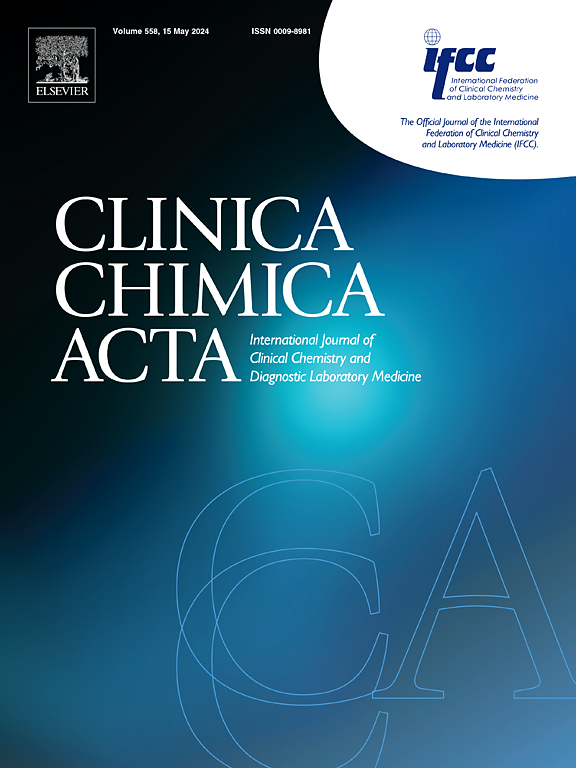Electrochemical glucose sensors for detection of diabetic retinopathy
IF 2.9
3区 医学
Q2 MEDICAL LABORATORY TECHNOLOGY
引用次数: 0
Abstract
Diabetic retinopathy necessitates continuous blood glucose monitoring, prompting the industry to develop affordable, rapid, and accurate glucose sensor devices, such as electrochemical glucose sensors, for clinical research. The domain of electrochemical glucose biosensing has undergone substantial expansion since the initial enzyme electrode was documented in 1962. The advancement of sensing platforms has been propelled by the creation of sophisticated nanostructures and their Nano-composites, including gold nanoparticles, carbon nanotubes, carbon/graphene quantum dots, and chitosan hydrogel composites. These nanomaterials have enhanced the immobilization process and electrocatalytic activity for glucose. This review outlines the progression of glucose biosensing, with a focus on the application of nanostructures for glucose detection, both with and without the enzyme, in diabetic retinopathy. We investigate the historical development of biosensors, advancements in surface science to improve electron transfer, and the array of sensing platforms created utilizing nanomaterials.
用于糖尿病视网膜病变检测的电化学葡萄糖传感器。
糖尿病视网膜病变需要持续的血糖监测,这促使业界开发价格合理、快速、准确的血糖传感器设备,如电化学血糖传感器,用于临床研究。电化学葡萄糖生物传感领域经历了实质性的扩展,因为最初的酶电极被记录在1962年。复杂的纳米结构及其纳米复合材料,包括金纳米粒子、碳纳米管、碳/石墨烯量子点和壳聚糖水凝胶复合材料,推动了传感平台的进步。这些纳米材料增强了葡萄糖的固定化过程和电催化活性。本文综述了葡萄糖生物传感的进展,重点介绍了纳米结构在糖尿病视网膜病变中葡萄糖检测的应用,包括有和没有酶。我们研究了生物传感器的历史发展,表面科学的进步,以改善电子转移,以及利用纳米材料创建的传感平台阵列。
本文章由计算机程序翻译,如有差异,请以英文原文为准。
求助全文
约1分钟内获得全文
求助全文
来源期刊

Clinica Chimica Acta
医学-医学实验技术
CiteScore
10.10
自引率
2.00%
发文量
1268
审稿时长
23 days
期刊介绍:
The Official Journal of the International Federation of Clinical Chemistry and Laboratory Medicine (IFCC)
Clinica Chimica Acta is a high-quality journal which publishes original Research Communications in the field of clinical chemistry and laboratory medicine, defined as the diagnostic application of chemistry, biochemistry, immunochemistry, biochemical aspects of hematology, toxicology, and molecular biology to the study of human disease in body fluids and cells.
The objective of the journal is to publish novel information leading to a better understanding of biological mechanisms of human diseases, their prevention, diagnosis, and patient management. Reports of an applied clinical character are also welcome. Papers concerned with normal metabolic processes or with constituents of normal cells or body fluids, such as reports of experimental or clinical studies in animals, are only considered when they are clearly and directly relevant to human disease. Evaluation of commercial products have a low priority for publication, unless they are novel or represent a technological breakthrough. Studies dealing with effects of drugs and natural products and studies dealing with the redox status in various diseases are not within the journal''s scope. Development and evaluation of novel analytical methodologies where applicable to diagnostic clinical chemistry and laboratory medicine, including point-of-care testing, and topics on laboratory management and informatics will also be considered. Studies focused on emerging diagnostic technologies and (big) data analysis procedures including digitalization, mobile Health, and artificial Intelligence applied to Laboratory Medicine are also of interest.
 求助内容:
求助内容: 应助结果提醒方式:
应助结果提醒方式:


